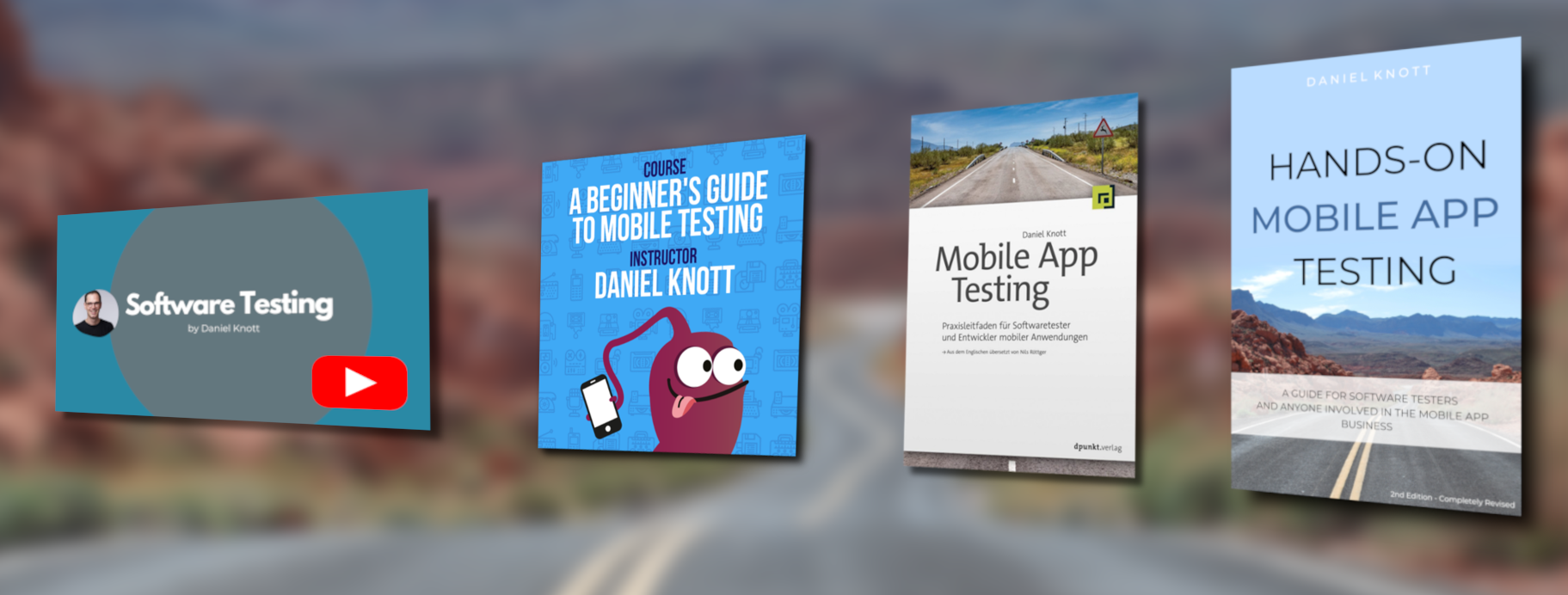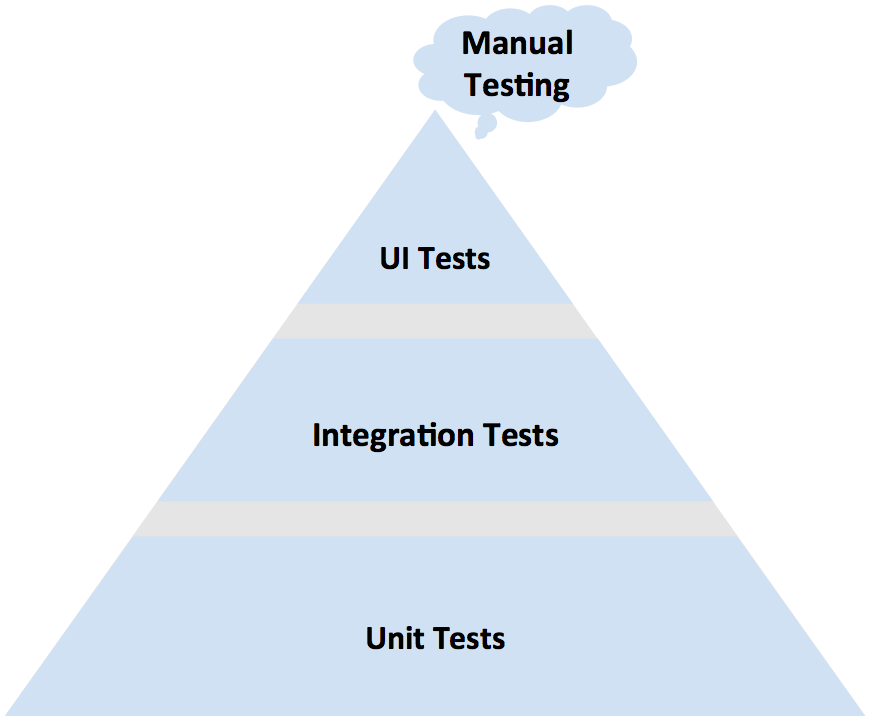Anyone who is involved in software testing and software test automation should know the test automation pyramid introduced by Mike Cohn (http://www.mountaingoatsoftware.com/).
This article contains excerpts from my book „Hands-On Mobile App Testing“ published with Pearson Education.
As you can see in the following image, the typical pyramid consists of three layers. At the bottom, there is the automated unit-testing layer, in the middle the automated integration testing layer and at the top there is the automated end-to-end testing layer (including the user interface tests). Each layer has a different size, indicating the number of tests that should be written within each stage. Manual testing is not part of the test pyramid, hence it is shown as a cloud for additional testing work.
But this pyramid is not applicable to mobile apps and mobile test automation. Mobile testing requires a totally different set of testing activities like movement, sensors, different devices and networks compared to other software like desktop or web applications. Lots of manual testing is required to be sure that a mobile app is working as expected in the different usage scenarios.






